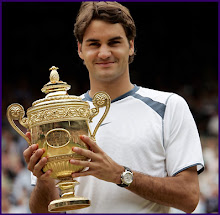Winning matches is as much about limiting your mistakes as it is about hitting powerful shots. Here are 10 simple ways to help you cut down on your errors.

1. USE MORE TOPSPIN
By increasing the amount of topspin on your shots, you can hit the ball harder and take a longer swing while minimizing the risk of sending the ball long. Plus, you’ll be able to hit the ball higher, giving you a greater safety margin over the net, which is where most mistakes are made.
2. GIVE YOURSELF ROOM
Aim your shots 3 to 4 feet inside the sideline and baseline and you’ll increase your consistency. Many players try to emulate the forcing shots they see the pros hitting, but they don’t realize that a vast majority of points at the rec level are won on opponents’ mistakes. Pick a safe target and give your opponent a chance to miss before you start going for high-risk shots.
3. ON DEEP SHOTS, MOVE BACK AND HIT THE BALL HIGH
At my institute, we teach our students that for every foot they have to move behind the baseline to hit a shot, they have to return the ball one foot higher over the net. Many times we see players get pushed back by a heavy, deep ball, yet they try to make an offensive shot out of it. This is low-percentage tennis. The smarter play is to hit the ball back heavy and deep—just make sure your opponent isn’t sneaking into the net—and wait for a better opportunity to take charge.
4. HIT MORE SPIN SERVES
Serving with spin, especially topspin, allows you to clear the net safely. Instead of trying to hit big first serves, think more like a baseball pitcher, who wants to get ahead in the count. If you increase your first-serve percentage, you’ll feel less pressure and reduce your number of double faults. Remember, it’s more important to hit your spots and move the serve around with different spins than it is to crack the big one near your opponent. Hitting kick serves also gets the ball up and away from your opponent and forces him to handle balls above his shoulders.

5. BECOME A SMART RETURNER
Have you noticed how often top players chip their returns to get the ball back into play? Few pros serve and volley now, which means they can safely float their returns back and work to gain control of the point. That’s what makes Roger Federer’s return so lethal against huge servers like Andy Roddick. You should do the same when returning serve. I see too many rec players trying to nail hard returns down the line. Give yourself more margin for error by hitting most of your returns crosscourt. This also gives you more time to get back to the center of the court.
6. DIP YOUR PASSING SHOTS CROSSCOURT
I often see players wind up and try to rip their passing shots down the line with virtually no topspin. It’s important to recognize that you don’t have to win the point with the fi rst pass. Many times a well-placed, dipping passing shot hit with lots of topspin and at your opponent’s feet will put you in position to win the point with your next shot. There are several things working for you here. A crosscourt dipping ball makes your opponent bend and reach at the same time. Plus, you give yourself much more margin for error if you pass crosscourt. And even if you don’t hit it well and your opponent gets his racquet on the ball, you at least force him to hit one more shot to win the point.
7. NEUTRALIZE FROM OUTSIDE THE COURT
These days too many players think they can go for winners when they’re on the run and outside the sidelines. This is a low-percentage play that’s guaranteed to lose you points over the course of a match. Instead, in this situation learn to hit either a defensive lob, a defensive slice that travels high over the net, or a high ball with topspin. All of these tactics neutralize an opponent’s big shot while giving you time to get back into position.

8. USE THE MOONBALL
The moonball—a high, heavy topspin shot—drives lots of players crazy. It may not be pretty, but it has a lot going for it. Because the heavy topspin makes the ball jump up, a moonball doesn’t need to be hit close to the lines to be effective, making it a very safe play. It’s also frustrating to many players because they don’t know if they should take it on the rise and risk an error or move way back, which puts them out of position. By adding this safe shot to your repertoire, you can be offensive without taking undue risk.
9. HIT DOWN THE MIDDLE
It’s amazing how effective you can be just hitting balls down the middle of the court, particularly against big hitters. First, you cut down on your errors because you’re hitting over the lowest part of the net. Second, you take sharper angles away from your opponents, which often tempts them to hit the ball even harder—and pile up errors in the process.
10. USE ANGLED VOLLEYS
Often, players come to the net thinking they have to blast volleys for winners, so they take big swings or try unrealistic shots to end the point. The safer play is to use an angled volley crosscourt. Not only does it give you more margin for error, it also forces your opponent to move sideways to hit a passing shot. A well-placed angled volley is usually enough to set up a winning volley on the next shot or even finish the point outright.

